
The Hajj and Umrah Magazine is the first Saudi government magazine to be issued during the reign of the founder King Abdulaziz Bin Abdulrahman Al Saud, over seventy years. The first issue of the magazine was published in 1947 under the name 'Hajj Magazine,' before changing its name in 1970 to 'al-Tadamun al-Islami Magazine,' only to revert in 1993 to its original name. The development of Hajj and Umrah Magazine The magazine witnessed development in 2002 when its name was cha...
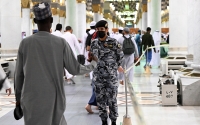
Crowd Management During the Hajj and Umrah Seasons is the system of services, technologies, and plans used by the Kingdom of Saudi Arabia to manage mass gatherings before, during, and after the performance of Hajj and Umrah rituals. This is achieved through coordination between the relevant entities and those organizing the Hajj and Umrah. It also includes the systematic and organized planning and supervision of crowd groups, considering the provision of essential services for pilgrims, Umrah p...

Transportation During Hajj Season is one of the services provided by the Kingdom of Saudi Arabia to pilgrims, supervised by the Ministry of Hajj and Umrah and the Ministry of Transport and Logistic Services, in cooperation with licensed entities, to ensure the arrival of the visitors of the Grand Mosque to Makkah al-Mukarramah, transport them between the holy sites, and secure their performance of the Hajj rituals. The transportation system during the Hajj season The operational plans for the t...
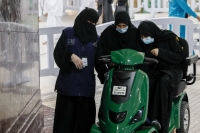
The General Authority for the Care of the Grand Mosque and the Prophet's Mosque has taken significant strides in empowering women by enabling them to work in the departments of the two Holy Mosques and activating their roles in various fields and tasks, including: Appointing new women leaders. Restructuring the Women's Auxiliary Agency. Establishing the Women's Development Affairs Agency. Providing field services to female visitors to the Two Holy Mosques. Appointing a female ass...
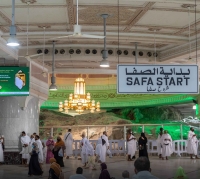
The General Presidency for the Affairs of the Grand Mosque and the Prophet's Mosque works on implementing the procedures approved by the Saudi Energy Efficiency Center to enhance energy efficiency and conserve energy consumption in the Grand Mosque through several measures, including: Converting all lighting units installed throughout the Grand Mosque to LED type. Providing sensors and detectors to turn off lights in facilities devoid of employees. Working towards achieving the highest lev...
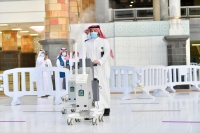
The General Authority for the Care of the Grand Mosque and the Prophet's Mosque has included a set of initiatives in its 2024 future plans aimed at developing operations in the Two Holy Mosques and automating their operational systems. Some of these initiatives include: Administrative restructuring. Empowering youth and women. Paying due attention to epidemic control. Considering the human and place development. Spreading knowledge and teaching the Holy Quran. Spreading centrism, moderatio...
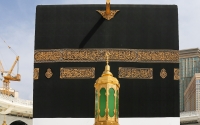
Al-Kaaba's Kiswa is the piece of cloth that covers al-Kaaba al-Musharrafah. It is woven with silk, gold, and silver threads on an annual basis. This tradition dates back to the construction of al-Kaaba until the era of the Founder of the Kingdom of Saudi Arabia, King Abdulaziz Bin Abdulrahman Al Saud, who regulated the affairs of the Kiswa and ordered the establishment of a factory for manufacturing al-Kaaba al-Musharrafah's Kiswa in Makkah al-Mukarramah. In 1927, the factory was e...
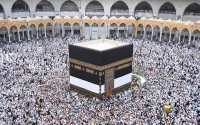
In previous centuries, the dimensions of al-Kaaba al-Musharrafa were a topic of disagreement among historians, as they lacked a standardized measuring at the time. Units included hand cubits and iron cubits, which led to measurements being inaccurate. It was eventually measured in meters in the modern era, with the results as follows: It measures 9.90 m from the Levantine Corner to the Western Corner. It measures 12.04 m from the Yamani Corner to the Western Corner. It measures 10.18 m from the...

Al-Mashaaer al-Mugaddassah Metro Line exclusively serves Hajj performers in Makkah al-Mukarramah. Hence, it operates during the Hajj season only, namely since its main task relates to transporting pilgrims to the Holy Sites through a railway linking Mina, Muzdalifah, and Arafat. It has nine stations over its eighteen km line. It has a speed of eighty km/h. It is considered among the most important means of transportation dedicated to transporting Hajj performers during the Hajj season. The trai...
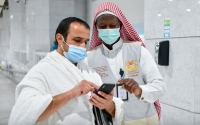
Yes, headphones dedicated to translation are distributed in the Two Holy Mosques. They are provided by the General Presidency for the Affairs of the Grand Mosque and the Prophet's Mosque (currently known as the General Authority for the Care of the Grand Mosque and the Prophet's Mosque) to beneficiaries in several locations frequented by those seeking translation services. The headphones are connected to radio waves dedicated to translating the sermons and lessons provided in the Two ...
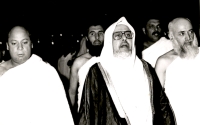
The Mutawwif of Kings and Presidents is Jamil Suleiman Jalal. He served in this role for fifty years, starting in 1947, before he was over fifteen years old. He performed the Tawaf (circumambulation) for several kings and presidents, including the Founding King Abdulaziz Bin Abdulrahman Al Saud. Jamil Suleiman Jalal was born in Makkah al-Mukarramah in 1934. He memorized the Quran from a young age and began his primary education at the Sawlatiyyah and al-Faisaliah schools in Makkah al-Mukarramah...
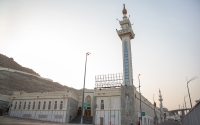
Al-Khayf Mosque is one of the five mosques located in the Holy Sites in Makkah al-Mukarramah, in the Kingdom of Saudi Arabia. The mosques include: Al-Mashaar al-Haram, Namirah, al-Bayaah, and al-Sakhraat. It is located at the base of the southern hill of Mina, near the small and middle stone pillars ( jamarat ). It is among the most important mosques in the Holy Sites and can accommodate 25,000 worshipers. Al-Khayf Mosque was named after its location, which refers to every decline from a mounta...